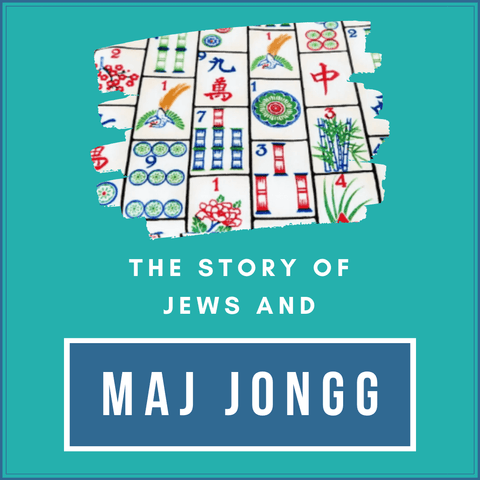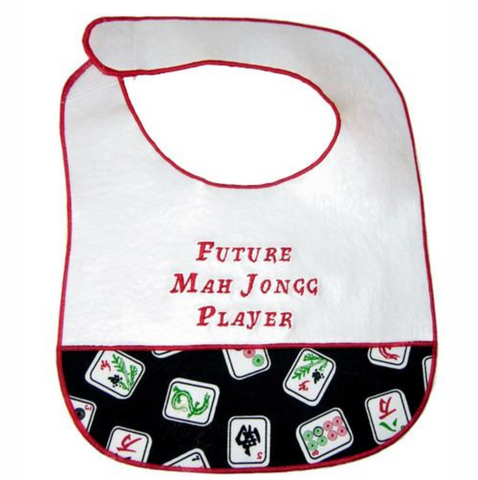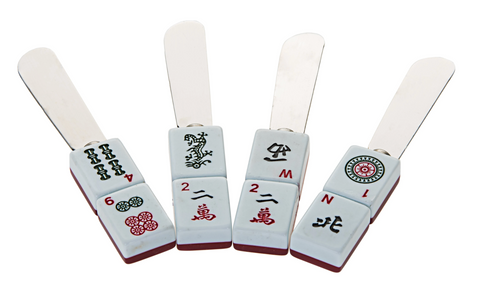Jews and Mah Jongg
1 Bam, 2 Crack, 8 Dot. Music to the ears of Mah Jongg players all over the world. The clacking of tiles and accompanying kibbitzing is like no other experience. American Jewish women are especially fond of the Chinese tile game. Why is that? And how do you play the social game in the middle of a pandemic?
The history of Mah Jongg is not totally known, but it is likely over 200 years old and originated in provinces near Shanghai, China during the Qing dynasty. Mah Jongg means "chattering sparrows", likely a reference to the sound the tiles make as you shuffle them. In the early 1900s, the tile game was played throughout China and became even more popular than chess. In 1920, the game was imported to the United States and today, hundreds of thousands of Americans, (many of them Jewish women) enjoy playing Mah Jongg for hours on end.
No one knows exactly why Mah Jongg became so popular with Jewish women, but there are several theories. It was a wonderful way to form friendships, either in your own neighborhood or on vacation in places like the Borscht Belt in the Catskills. Oftentimes, the men of the house were either off to war or working, so this filled the hours for women who were in need of socializing and connections. There were even special foods served during a lively game of Mah Jongg: bridge mix, cut up pineapple, walnuts, and raisins, and of course the ever-present Entenmann's coffee cake. A classic! Kids would watch their mothers and grandmothers play and eventually, they too became skilled players. Today, a whole new generation is playing and in an age of social media, it is a welcome respite to just sit, talk and play; sharing tales of parents, children, and the latest episode of the Bachelor.
As a 30-something adult, I have been playing Mah Jongg for more than half my life. We loved all games growing up, and I often played Mah Jongg with my Mom, Bubbe, and brother. I would watch my mom get together with the girls every week to play and kibbitz. Usually, my brother and I would hide in the basement, but on a rare occasion, I got to fill in when they were missing a fourth. In my mid-20's when I moved from New York City to Austin, TX, a friend of my Mom knew of a group of girls who played every Monday who were around my age. It was a fun way to meet people. And, let's be honest, an excuse to have a little wine on a Monday! We've kept in touch over the years and I even played yenta and set up one of my Mah Jongg friends with another friend and now they are married with two adorable sons. The miracle of Mah Jongg!
So, how is this game played? First, we assemble a bridge table and four chairs and set out our snacks and drinks (essential!). What you eat and drink will depend on the group, but go easy on the alcohol - you need all your wits about you! The game has a total of 152 tiles; Bams, Cracks, Dots, Dragons, Winds, Jokers, and Flowers and is accompanied by a rack and a Mah Jongg card which changes annually. Each player sets up a "wall" of tiles in front of their rack and the passing begins. The first three passes are called the First Charleston and are compulsory passing of three tiles at a time (right, across, left). The Second Charleston is optional and is also three passes of three tiles (left, across, right). A courtesy pass ends the passing portion and now you are off and running. Tiles are picked and thrown until players are able to "Call" to expose part of their hand or at some point to yell MAH JONGG which creates some congratulations for the winner and much more discussion around why the other plays failed to win - "I just needed one tile!" "You had my tile!" Let the kvetching begin.






1 comment
Do you have a Mah Jongg set that you’d recommend? I’m a beginner.
Thanks!